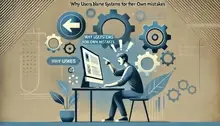
The assessment and marking of A-Level papers in the United Kingdom have undergone a remarkable transformation over the years. From manual grading with red pens to the integration of cutting-edge digital technologies, the process has evolved to become more efficient, accurate, and transparent. This article delves into the journey of how A-Level paper marking has changed, highlighting the pivotal role technology has played in shaping this evolution.
The Era of Manual Marking
In the early years of A-Level examinations, the marking process was a labor-intensive endeavor carried out predominantly by human examiners armed with red pens and paper answer scripts. This method, although effective to an extent, was susceptible to inconsistencies and subjectivity. The reliance on manual marking often led to variations in interpretation, potentially impacting students' final grades and academic futures.
The Advent of Optical Mark Recognition (OMR)
As technology advanced, so did the A-Level marking process. The introduction of Optical Mark Recognition (OMR) in the late 20th century marked a significant shift. OMR allowed for the automation of multiple-choice question grading by scanning and processing answer sheets. This automation reduced human error, improved efficiency, and provided a standardized approach to grading.
Digitalization and Computerized Marking
The turn of the millennium witnessed a more comprehensive transformation with the integration of digital technologies. Many examination boards adopted computerized marking systems, enabling examiners to grade papers electronically. Digital marking not only expedited the process but also facilitated easier moderation and quality control. Examiners could access digital copies of papers and collaborate remotely, ensuring uniformity in grading.
Online Submission and E-Marking
The digital evolution culminated in the adoption of online submission and e-marking platforms. Students began submitting their assignments electronically, eliminating the need for physical paper handling. This shift not only reduced the environmental footprint but also streamlined the logistical aspects of the marking process. Examiners were equipped with sophisticated e-marking tools that allowed them to annotate papers digitally, improving readability and accessibility.
Data-Driven Insights and Statistical Analysis
Technology-driven advancements brought forth the ability to extract valuable insights from data. Statistical analysis tools were employed to detect anomalies, patterns, and trends in the marking process. This data-driven approach helped identify potential inconsistencies and biases, ensuring that students received fair and accurate evaluations. Additionally, these insights informed curriculum improvements and instructional strategies.
Transparency and Quality Assurance
With digitalization, the marking process became more transparent and accountable. Students and educators gained access to detailed feedback, facilitating a deeper understanding of their performance. The digitization of exam scripts also enabled more efficient quality assurance measures, such as random sampling and second-marking to maintain accuracy and fairness.
Conclusion
The journey of A-Level paper marking in the UK from manual grading to embracing advanced digital technologies is a testament to the education system's commitment to excellence. Technology has revolutionized the process, enhancing efficiency, transparency, and accuracy. As technology continues to evolve, the A-Level marking process is likely to become even more refined, ensuring that students' hard work is accurately assessed, leading to a brighter future for the education landscape as a whole.












